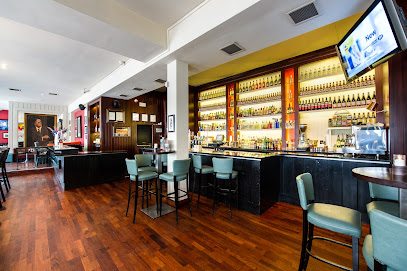
Discover the Wonders of Nature at the National Museum of Ireland - Natural History
Explore the National Museum of Ireland - Natural History, a captivating journey through Ireland's rich biodiversity, free admission, and stunning exhibits await.
The National Museum of Ireland - Natural History invites tourists to explore Ireland’s rich biodiversity through captivating exhibits. Experience everything from ancient fossils to modern wildlife, all housed in a stunning historic building in Dublin.
A brief summary to National Museum of Ireland - Natural History
- Merrion St Upper, Dublin 2, D02 F627, IE
- +35316777444
- Visit website
- Monday 1 pm-5 pm
- Tuesday 10 am-5 pm
- Wednesday 10 am-5 pm
- Thursday 10 am-5 pm
- Friday 10 am-5 pm
- Saturday 10 am-5 pm
- Sunday 1 pm-5 pm
Local tips
- Visit during weekdays for a quieter experience and to avoid weekend crowds.
- Plan your visit early in the day when the museum opens to fully enjoy the exhibits.
- Check the museum's website for any special exhibitions or events happening during your visit.
- Take advantage of the free admission and consider leaving a donation to support the museum.
Getting There
-
Walking
From Merrion Square, head towards the southwestern corner of the park. Exit the park onto Merrion Street Upper. Continue walking straight along Merrion Street Upper for approximately 5 minutes. The National Museum of Ireland - Natural History will be on your right at the address Merrion St Upper, Dublin 2, D02 F627. It is a large building with a distinctive entrance.
-
Public Transport (Bus)
From Merrion Square, walk to the nearest bus stop at Merrion Square North. Catch the Bus No. 7 or 46A, which travels towards the city center. After one stop, get off at the stop named 'Merrion Square'. It is a short walk back to Merrion Street Upper where the National Museum of Ireland - Natural History is located. The bus fare is approximately €2.00 for a single journey.
Discover more about National Museum of Ireland - Natural History
Iconic landmarks you can’t miss
Merrion Sq West
0.1 km
Discover the serene beauty of Merrion Square West, a historic Georgian park in Dublin, perfect for relaxation, culture, and exploration.
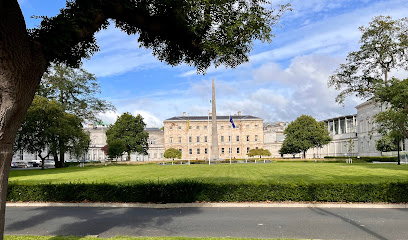
Rutland Fountain
0.2 km
Explore the elegance of Rutland Fountain, a historic landmark in Dublin's Merrion Square, surrounded by stunning Georgian architecture and lush gardens.

Kildare St
0.2 km
Discover the cultural heartbeat of Dublin at Kildare Street, where history meets vibrant city life amidst iconic landmarks.
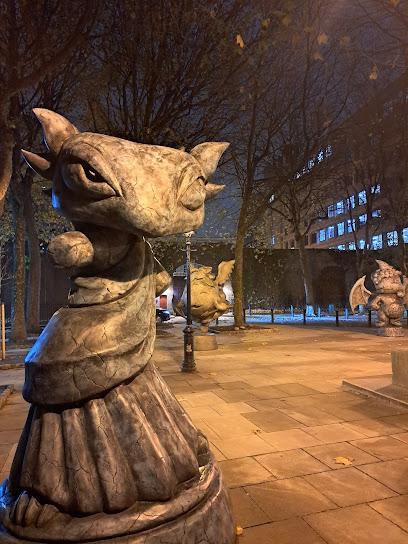
90 Merrion Square W
0.2 km
Discover the beauty and history of Merrion Square, Dublin's iconic Georgian square, perfect for relaxing strolls and cultural exploration.
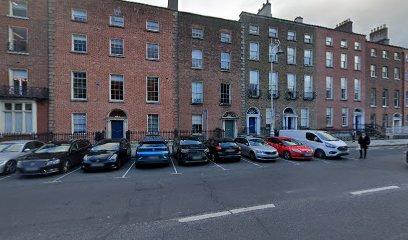
Royal Society of Antiquaries of Ireland
0.3 km
Explore Ireland's rich history at the Royal Society of Antiquaries, a treasure trove of artifacts and exhibitions in Dublin's Merrion Square.
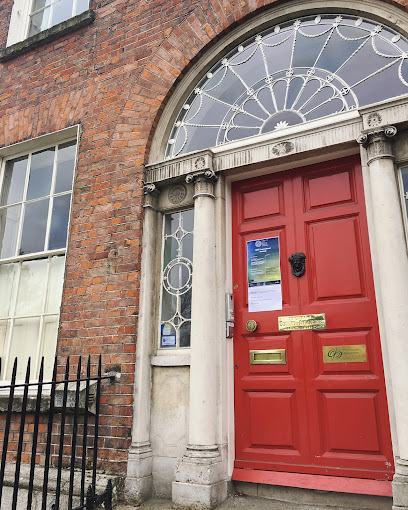
The Little Museum of Dublin
0.3 km
Explore the rich tapestry of Dublin's history at The Little Museum, where captivating stories and unique artifacts bring the city's past to life.
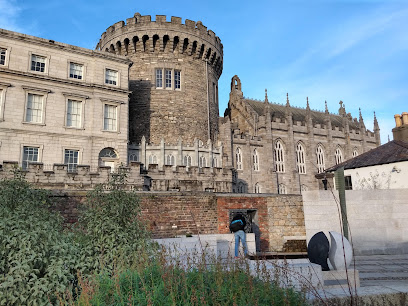
Ecological Museum at Trinity College
0.3 km
Explore biodiversity and ecological wonders at the Ecological Museum in Trinity College Dublin, a must-visit for nature lovers and curious travelers.

10 St Stephen's Green
0.4 km
Discover the beauty and history of St Stephen's Green, Dublin's iconic park and cultural hub, perfect for relaxation and exploration.
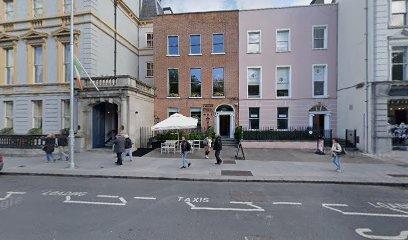
4 Merrion Square S
0.4 km
Discover the serene beauty and rich history of Merrion Square, a stunning Georgian park in the heart of Dublin, perfect for relaxation and cultural exploration.
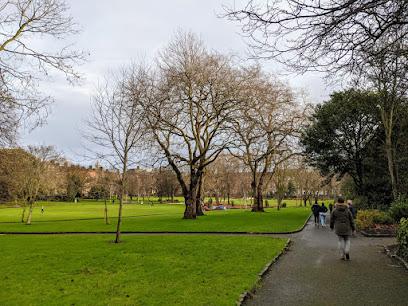
St Stephen's Green
0.4 km
Experience the beauty and history of St Stephen's Green, Dublin's iconic park, where lush gardens meet vibrant city life.
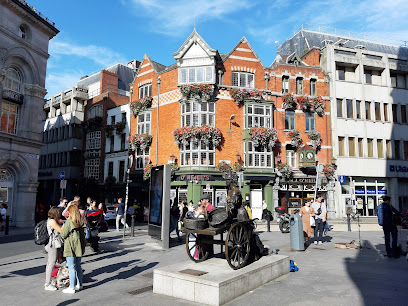
Trinity College Dublin
0.4 km
Explore the rich history and stunning architecture of Trinity College Dublin, home of the Book of Kells and a vibrant academic atmosphere.

TCD Arts Building
0.5 km
Explore the TCD Arts Building in Dublin, where creativity meets history in a beautiful academic setting at Trinity College.
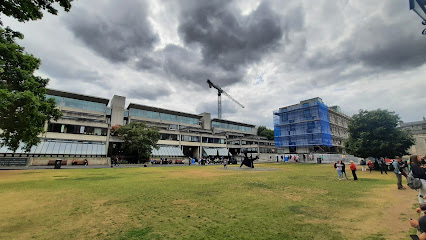
Irish Architectural Archive
0.5 km
Explore Ireland's architectural legacy at the Irish Architectural Archive, a cultural center dedicated to preserving and showcasing the nation's rich architectural history.
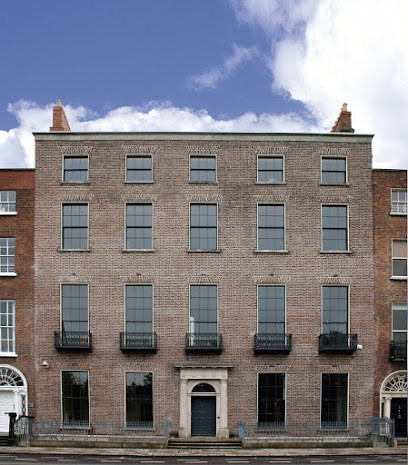
School of Histories and Humanities, Arts Building, Trinity College Dublin
0.5 km
Explore the School of Histories and Humanities at Trinity College Dublin, where Ireland's academic tradition meets rich cultural heritage.
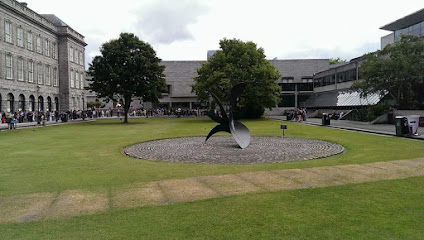
The Three Fates Fountain
0.5 km
Explore the exquisite Three Fates Fountain in St. Stephen's Green, a sublime sculpture that embodies Dublin's artistic heritage and tranquil park life.
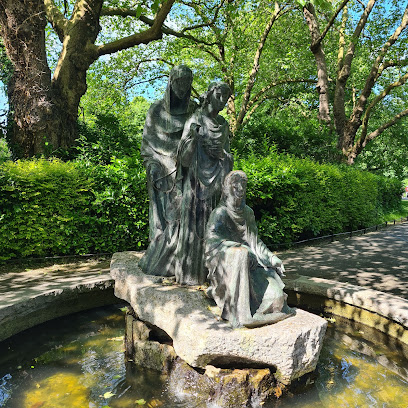
Unmissable attractions to see
Department of the Taoiseach
0.1 km
Explore the Department of the Taoiseach in Dublin, a symbol of Irish governance blending history with modern political life.
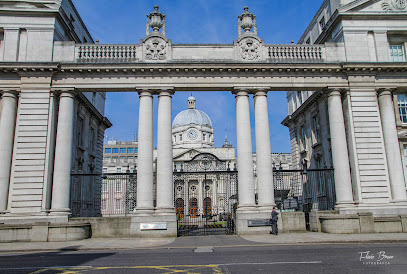
Leinster House
0.1 km
Explore Leinster House, the iconic seat of the Irish Parliament in Dublin, showcasing stunning Georgian architecture and rich political history.
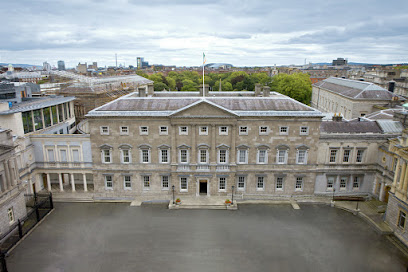
National Museum of Ireland - Archaeology
0.1 km
Explore Ireland's rich heritage at the National Museum of Ireland - Archaeology, showcasing treasures from prehistoric to medieval times.
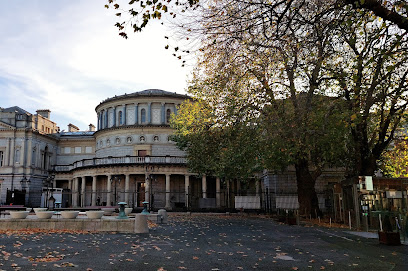
National Museum of Ireland, Kildare Street
0.1 km
Explore Ireland's vibrant history and cultural heritage at the National Museum of Ireland, Kildare Street. A captivating journey through time awaits you.
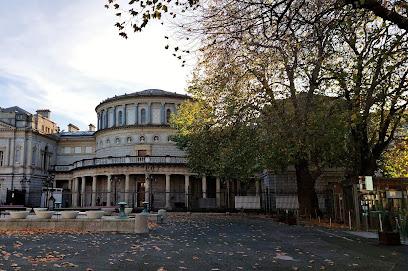
National Gallery of Ireland
0.1 km
Discover Ireland's rich artistic heritage at the National Gallery of Ireland, showcasing masterpieces from renowned artists in a stunning setting.
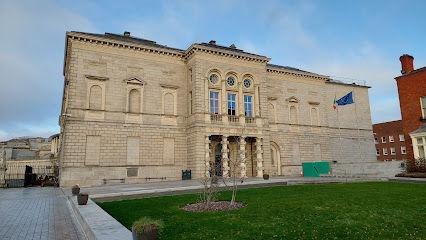
Merrion Square W
0.1 km
Explore Merrion Square, Dublin's historic Georgian park, where tranquility meets culture amidst stunning architecture and natural beauty.
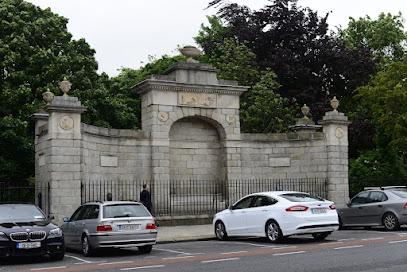
Defence Forces Memorial
0.1 km
Discover the Defence Forces Memorial in Dublin, a serene tribute to Ireland's military heroes nestled in the picturesque Merrion Square Park.
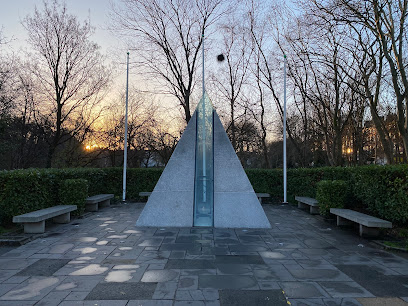
National Library of Ireland
0.2 km
Explore Ireland's literary legacy at the National Library, a treasure trove of books, history, and culture in the heart of Dublin.
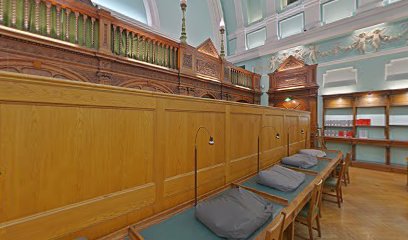
Huguenot cemetary
0.2 km
Discover the historical Huguenot Cemetery in Dublin, a serene resting place that showcases the city's rich heritage and the legacy of the Huguenot community.
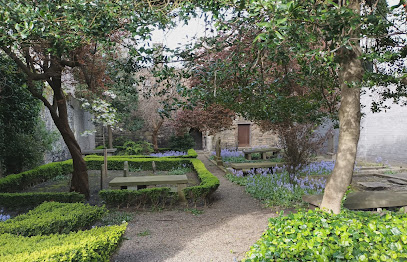
O'Donoghues Bar
0.2 km
Experience the heart of Dublin at O'Donoghues Bar, a legendary pub known for its traditional Irish music, hearty meals, and welcoming atmosphere.
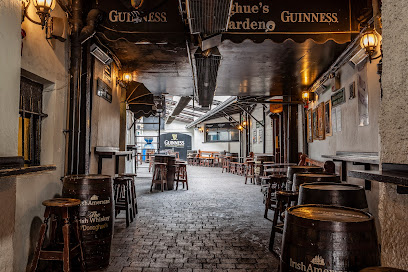
McGrattans Pub
0.2 km
Discover the heart of Dublin at McGrattans Pub, where grill delights and a lively atmosphere create the ultimate Irish pub experience.
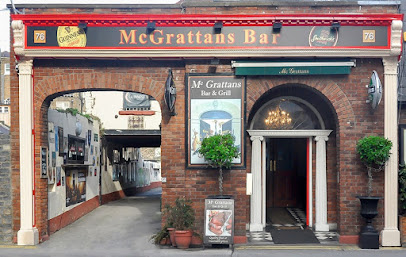
Doheny & Nesbitt
0.2 km
Discover the heart of Dublin at Doheny & Nesbitt, a historic pub offering traditional Irish fare and a vibrant atmosphere for every traveler.
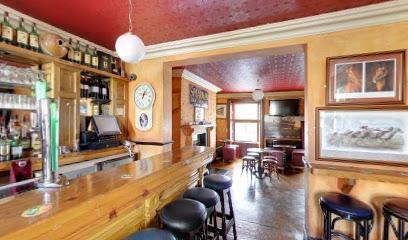
Oscar Wilde Statue
0.2 km
Explore Dublin's Oscar Wilde Statue, a vibrant tribute to the legendary playwright set in the serene Merrion Square Park amidst lush gardens and rich history.

The Oscar Wilde Monument
0.2 km
Explore the Oscar Wilde Monument in Dublin, a vibrant tribute to the iconic playwright amidst the lush beauty of Merrion Square Park.
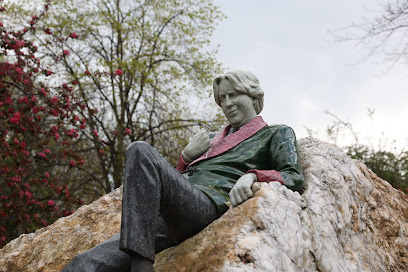
Oscar Wilde House
0.2 km
Discover the Oscar Wilde House in Dublin, a historic landmark celebrating the life and works of one of Ireland's greatest playwrights amidst stunning Georgian architecture.

Essential places to dine
The Cellar Bar
0.1 km
Discover Dublin's charm at The Cellar Bar, where elegance meets exquisite cuisine in the heart of Ireland's capital.
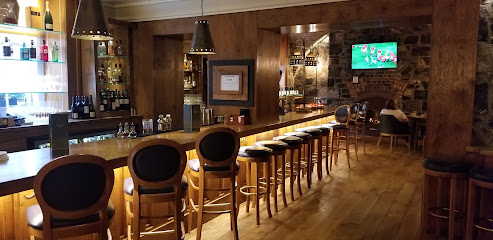
Restaurant Patrick Guilbaud
0.2 km
Experience culinary artistry at Restaurant Patrick Guilbaud – Dublin's premier destination for exquisite fine dining with seasonal Irish flavors.
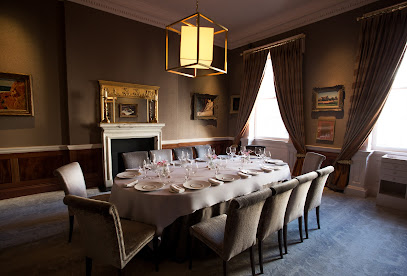
Hugo's Restaurant
0.2 km
Experience the best of Irish and Modern French cuisine at Hugo's Restaurant in Dublin - where every meal is an unforgettable culinary journey.
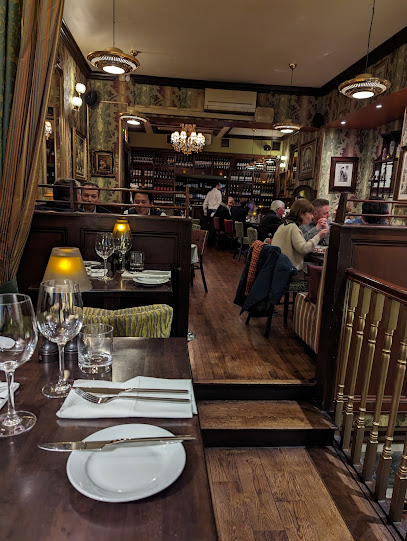
Pearl Brasserie
0.2 km
Discover Pearl Brasserie: A fine dining experience blending French elegance with Asian flavors in Dublin's vibrant culinary scene.
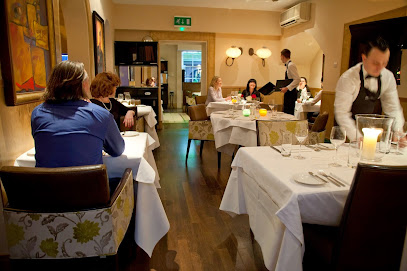
Foley's Bar
0.2 km
Discover Foley's Bar: A vibrant gastropub and live music venue in Dublin offering delicious food and authentic Irish entertainment.
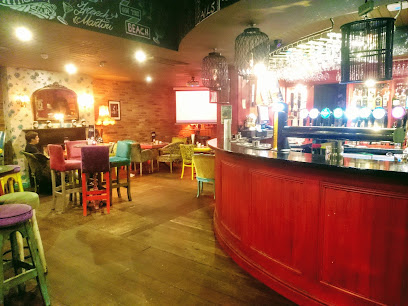
The Garden Room
0.2 km
Discover the culinary charm of The Garden Room in Dublin with its Modern European dishes crafted from fresh local ingredients.

BANG Restaurant & Wine Bar Dublin D02 KW61
0.2 km
Discover the elegance of modern European cuisine at BANG Restaurant & Wine Bar in Dublin - where every meal is an unforgettable experience.
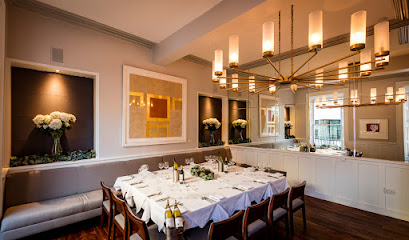
BANG restaurant & wine bar
0.2 km
Experience modern Irish cuisine at BANG Restaurant & Wine Bar in Dublin, where local flavors meet fine dining in an elegant setting.
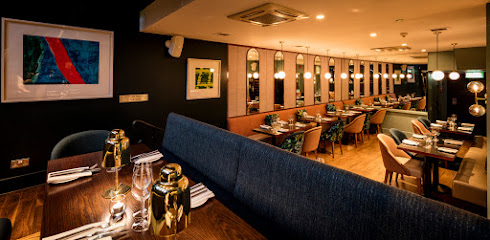
Etto
0.2 km
Discover Etto: Dublin's premier modern European restaurant offering exquisite local flavors and an inviting atmosphere perfect for all diners.

The Saddle Room
0.2 km
Discover authentic Irish cuisine at The Saddle Room in Dublin – where tradition meets modern elegance.
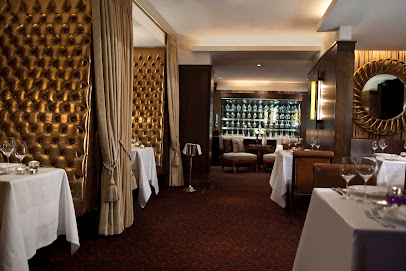
The Grayson
0.2 km
Experience modern European dining at The Grayson in Dublin—where exquisite cuisine meets stunning views over St. Stephen's Green.
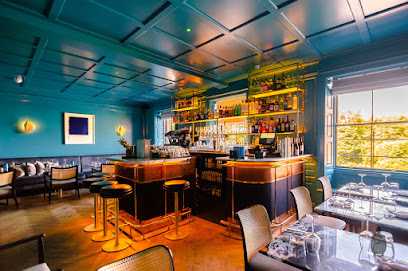
Speranza Restaurant @ The Mont
0.2 km
Experience authentic Italian flavors in the heart of Dublin at Speranza Restaurant – where every dish tells a story.
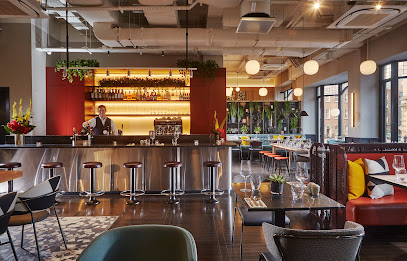
Lotus Eaters
0.3 km
Experience exquisite Asian fusion cuisine at Lotus Eaters in Dublin - where local Irish ingredients meet innovative culinary artistry.
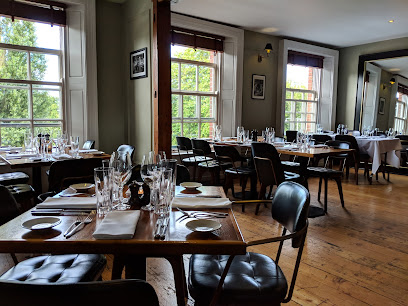
The Pig's Ear
0.3 km
Experience modern Irish cuisine at The Pig's Ear, where local ingredients meet culinary creativity in Dublin’s vibrant dining scene.
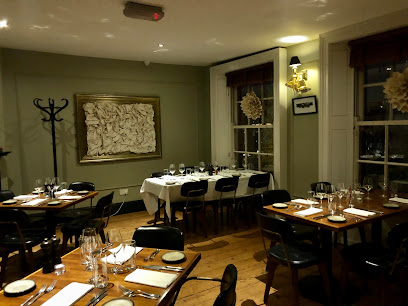
One Pico Restaurant
0.3 km
Discover One Pico Restaurant: A Fine Dining Gem in Dublin Merging French Elegance with Irish Charm.
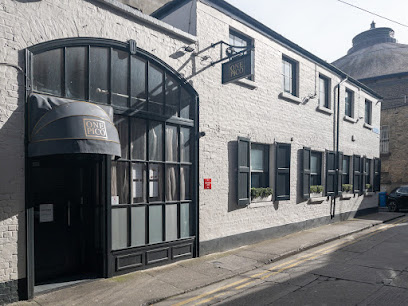
Markets, malls and hidden boutiques
The Gallery Shop
0.2 km
Explore The Gallery Shop in Dublin for unique gifts and art-inspired treasures that reflect Ireland's rich cultural heritage.
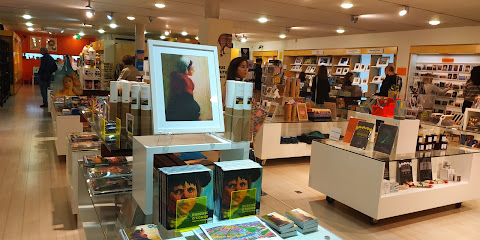
Kilkenny Design
0.3 km
Explore Kilkenny Design, Dublin's premier destination for authentic Irish goods, delightful café experiences, and unique local craftsmanship.
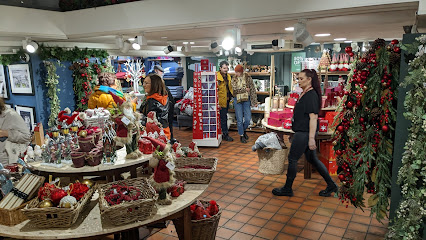
Traditional Craft Limited
0.3 km
Explore Traditional Craft Limited in Dublin for unique handmade crafts that showcase Ireland's rich artistic heritage and creativity.

Louise Kennedy
0.4 km
Explore the luxurious world of Louise Kennedy, Dublin's premier fashion designer, offering timeless women's clothing with a touch of elegance.
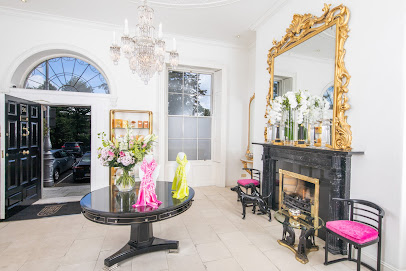
& Other Stories
0.5 km
Discover & Other Stories, Dublin's fashion gem, offering chic women's clothing and accessories in a stylish setting on Grafton Street.
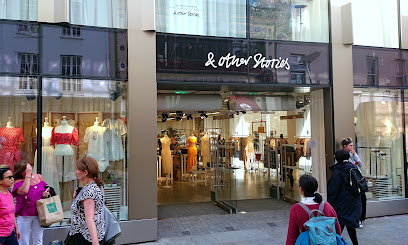
Marks and Spencer
0.5 km
Discover high-quality groceries and stylish clothing at Marks and Spencer in Dublin's bustling Grafton Street, a must-visit for every tourist.

Victoria's Secret
0.5 km
Explore Victoria's Secret in Dublin for luxurious lingerie, stylish women's clothing, and enchanting fragrances in an elegant shopping environment.
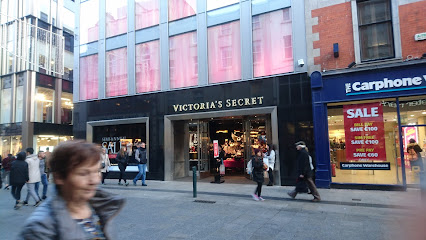
Carrolls Irish Gifts
0.5 km
Explore Carrolls Irish Gifts in Dublin for unique Irish souvenirs, traditional crafts, and authentic gifts that capture the heart of Ireland.
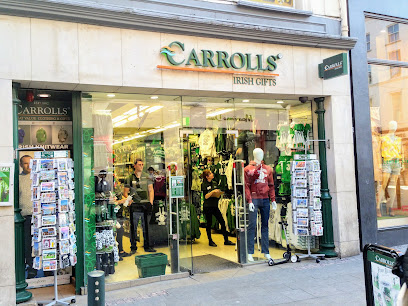
Ted Baker - Dublin
0.5 km
Discover the unique British style at Ted Baker Dublin, a premier destination for fashion lovers seeking quality men's and women's clothing.
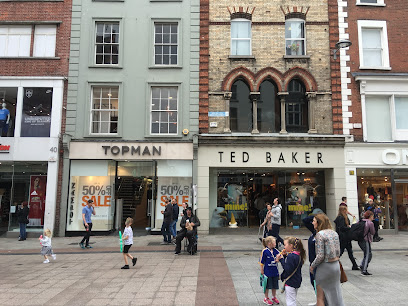
The Angel of Grafton Street
0.5 km
Explore the enchanting Angel of Grafton Street, a stunning statue that embodies Dublin's rich cultural heritage amidst the vibrant atmosphere of Grafton Street.
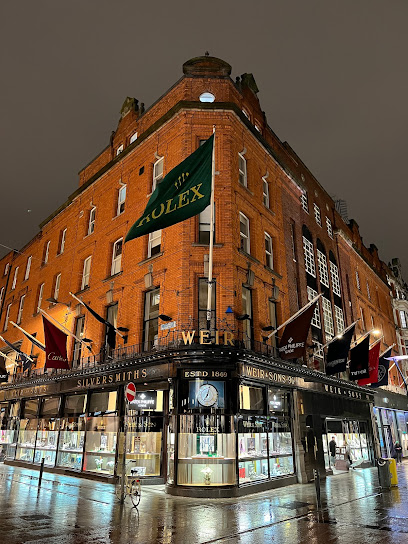
Trinity Gift Shop
0.5 km
Discover unique Irish gifts and souvenirs at Trinity Gift Shop, nestled in the historic Trinity College Dublin, a must-visit for every traveler.

Disney Store Dublin
0.5 km
Discover the magic of Disney at the enchanting Disney Store Dublin, your ultimate destination for gifts, toys, and unforgettable memories.
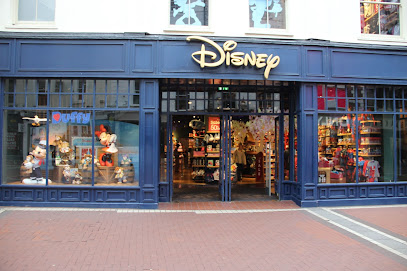
Grafton
0.5 km
Experience the vibrant culture and shopping charm of Grafton Street in Dublin, a pedestrian paradise filled with shops, street performers, and local delights.
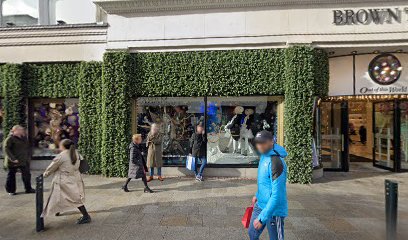
Cogs Toys & Games
0.5 km
Discover a world of imagination at Cogs Toys & Games, the ultimate toy store for families in Dublin's vibrant shopping hub.

BOSS Store
0.5 km
Explore the BOSS Store on Grafton Street for luxury fashion and accessories in the heart of Dublin, a must-visit for style enthusiasts.
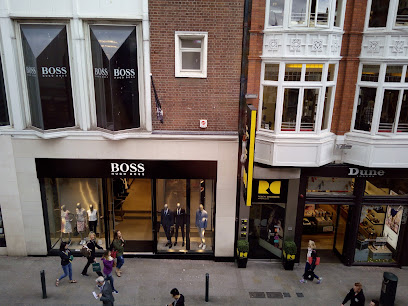
Essential bars & hidden hideouts
Reilly's Bar
0.2 km
Reilly's Bar in Dublin: A cozy haven for tourists, offering a wide selection of drinks and live music in a warm, inviting atmosphere.
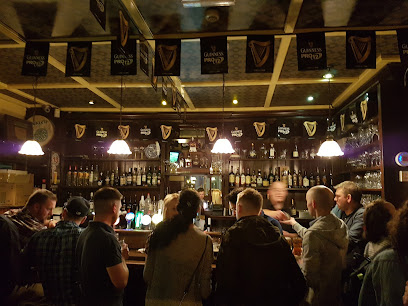
The Horseshoe Bar
0.2 km
Discover The Horseshoe Bar, a must-visit grill in Dublin, blending traditional Irish hospitality with contemporary dining experiences.

No. 27 Bar & Lounge
0.2 km
Experience the elegance of No. 27 Bar & Lounge in Dublin, where unique cocktails and delightful desserts await in a sophisticated setting.
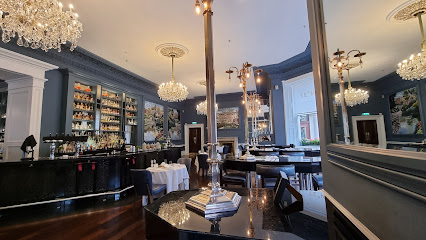
The Sin Bin
0.2 km
Experience Dublin's vibrant sports culture at The Sin Bin, where delicious food, refreshing drinks, and live sports create an unforgettable atmosphere.
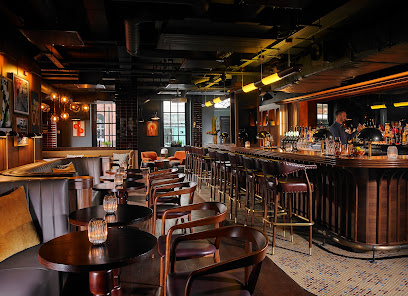
Toners
0.2 km
Discover the heart of Dublin's pub culture at Toners, where traditional Irish hospitality meets lively entertainment and delicious cuisine.
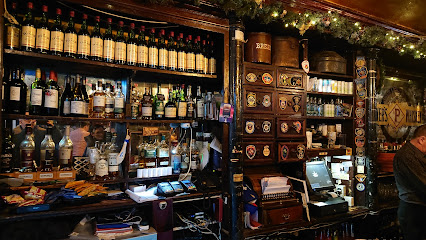
Cellar 22
0.3 km
Discover Cellar 22, Dublin's top wine bar and restaurant, offering a perfect blend of exquisite wines and delicious culinary delights in a charming atmosphere.
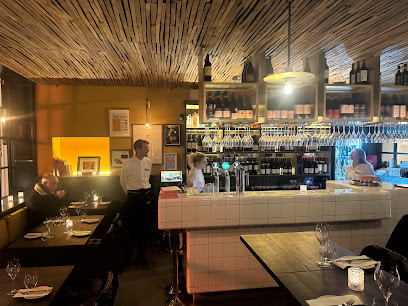
Pavilion Bar
0.3 km
Discover the vibrant Pavilion Bar in Dublin, where affordable drinks and a lively atmosphere await in the heart of the city.

Peruke & Periwig
0.4 km
Discover Peruke & Periwig: Dublin's premier cocktail bar and restaurant, blending innovative drinks with a delightful dining experience.
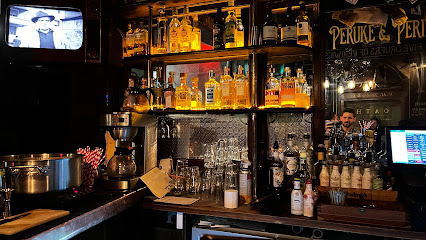
The Dawson Lounge
0.4 km
Experience the warmth of Irish hospitality at The Dawson Lounge, a cozy pub in the heart of Dublin offering a wide selection of drinks and delicious local dishes.
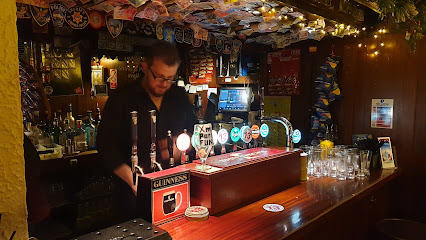
9 Below
0.4 km
Discover Dublin's vibrant nightlife at 9 Below, a stylish cocktail bar offering innovative drinks and a chic atmosphere for every occasion.
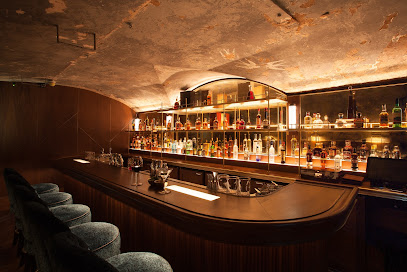
Lemon & Duke
0.4 km
Experience Dublin's vibrant nightlife at Lemon & Duke, a bar offering craft drinks, delicious food, and a lively atmosphere in the heart of the city.
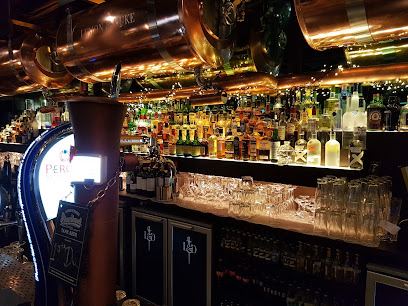
Kehoes Pub
0.4 km
Discover the essence of Dublin at Kehoes Pub, where traditional Irish spirit meets a lively atmosphere and delicious fare.
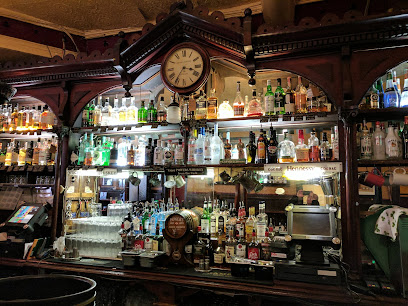
Zozimus Bar
0.4 km
Discover Zozimus Bar in Dublin: a premier cocktail bar offering brunch, live music, and an electrifying atmosphere for a memorable night out.
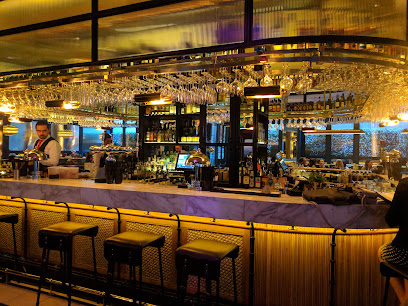
Maher's Pub
0.5 km
Discover Maher's Pub in Dublin: A classic Irish bar offering a warm atmosphere, great drinks, and unforgettable experiences in the heart of the city.
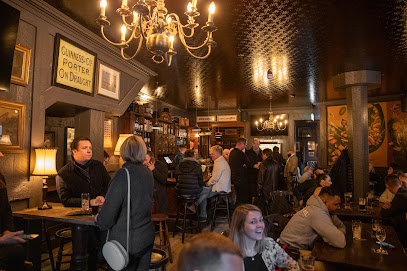
The Bailey - Cafe and Bar
0.5 km
Experience Dublin’s vibrant pub culture at The Bailey, where traditional meets contemporary in a cozy setting with delightful drinks and bites.
